Last month I watched 20 episodes of “Power Rangers Samurai” (2011), which was filmed in Auckland, New Zealand and was based on the 2009 Japanese Super Sentai season, “Samurai Sentai Shinkenger.” It’s about a group of young Samurai Rangers who’ve trained since childhood and come together at a crucial point in their young adult life to stop the onslaught of monsters seeping through “gaps” from the “netherworld” where their monstrous leader, Xandred, and his minions were consigned centuries ago by an earlier group of Samurai Rangers. It was a series I only watched sporadically when it was originally on, so I never came to appreciate the beauty of the building in which the Rangers live and train, known as Shiba House to its occupants since it’s owned, in the show, by the Shiba Samurai Clan, the Rangers’ backer.
It’s a modernist building incorporating traditional Japanese design elements and is a beautiful structure both inside and out. It looked to me to be so real and solid that I couldn’t imagine a Power Rangers budget being able to afford the expense of constructing such a set, even in New Zealand, where production costs are considerably lower than in Hollywood.
Look at those hardwood floors, the concrete walls, the wooden furniture, the wooden beams in the ceiling.
And the real grass and foliage in the grounds around the house.
I love how the living room and dojo are connected to each other.
And we see the hallways and entrances. We get a sense of how every room in the house connects.
And this kitchen, with its marble countertops, is to die for. How much better a cook I’d be with a kitchen like this.
And there’s an outdoor eating station complete with high-tech grill. Antonio (Steven Skyler), the Gold Ranger introduced in episode #13: Unexpected Arrival, wheels a fish cart around (much like his counterpart, Genta, in Shinkenger), but he does his best cooking on the grill in front of the house.
Every member of the team seems to have their own room, as seen here where Kevin (Najee De-Tiege), the Blue Ranger, retires at night after a rigorous self-imposed training regimen.
And Jayden (Alex Heartman), the Red Ranger, even has a desk in his room (the only desk I spotted in any of the episodes).
When they’re injured, however, they seem to get bunched together, presumably to make tending to them a little easier.
One of the rooms they’re in looks out onto the front yard, where they sometimes train, which helped lead me to believe they were shooting inside the structure and not on a soundstage.
I was convinced this was a real house somewhere in New Zealand and that the interior scenes were shot inside the house and that somehow the producers of Power Rangers managed to convince the owner to let them use the place for two whole seasons. (“Power Rangers Samurai” was followed in 2012 by “Power Rangers Super Samurai,” with the same cast, the first time two PR seasons were created from one Super Sentai season, a practice that continues to this day.)
So I researched architecture, modernism and Japanese home design in Auckland and New Zealand to see if I could find information about this house. I tried every possible combination of potential subject words. Nothing.
I did find one image that looked somewhat similar, but that’s it:
So I added Power Rangers Samurai to the search and got links to the Auckland Tourism Commission and the New Zealand Film Commission, but found no answers to my questions on those sites. I did find some references to “Shiba House” on Power Rangers fan sites, but they only mentioned it in the context of the show. If any PR fanboy in the world ever displayed any curiosity about this extraordinary structure, it wasn’t easily found via Google search. (I did find a question about the house on Reddit from a parent of a child watching the show and they were told to try and get in touch with cast members on social media and ask them.)
As I watched the show, I was also watching its Japanese counterpart, Shinkenger, filmed at the Toei Studio in Japan, and quickly noticed that the PR episodes were practically shot-for-shot, scene-for-scene remakes of the Japanese episodes. This made it very easy for me to follow the Shinkenger episodes, which are in Japanese with no subtitles. (I’d seen the Shinkenger episodes two years ago, but was aided then only by printouts of English-language plot synopses from Wikipedia, which were inadequate and never fully fleshed out.) As far as I know, no other PR season followed that strategy. Compare these scenes from Shinkenger with their PR remakes.
In some scenes the compositions used in Shinkenger were duplicated by the Power Rangers filmmakers. Could it be, I wondered, that the house was indeed a set built to specifications based on a close study of the Japanese version?
I noticed in long shots of the front of the house that there was a second floor. Yet we see no sign of a staircase anywhere inside. That should have told me something.
So, was this a real house or a studio set? How could I find out?
I looked up the credits for the series and identified the Production Designer as Miro Harre and the Art Director as Rachael Cooper. Maybe if they had websites or had ever been interviewed about their work on the series, they could answer my questions. I searched. Zero, zip, zilch, nada. I finally sent queries to the Auckland Tourism Commission, the New Zealand Film Commission and one of the cast members of the show who had what looked like a legit Facebook page.
To make a long story short, no definitive answer would be forthcoming until I finally found the website of a New Zealand production company headed by one of the key production personnel of PR Samurai and sent an e-mail to this producer with my questions. The message was forwarded and I got a reply within a few hours (evening for me, early morning for them). Here was the response:
Both the interior and the exterior of The Shiba house were sets built on the studio lot where we filmed Power Rangers. The exterior was on the back lot actually very close to where our big greenscreen was. Miro as the Designer did a wonderful job.
I agree it was a beautiful set and the garden was beautiful and very restful when you were in it. It provided plenty of options when it came to shooting scripts.
The studio in question is Studio West, a full-scale film and television production facility in Auckland.
Pretty amazing. And I was happy to finally get the answer. I’ve been watching, off and on, all the Power Rangers seasons filmed in New Zealand and I’ve noticed above-average production values in a lot of them and some very large, well-designed studio sets, including in the current season, “Power Rangers Beast Morphers,” but nothing that impressed me the way Shiba House has. Production Designer Miro Harre worked on six previous Power Rangers seasons, so now I have to go back and watch those seasons again for similar strokes of genius. PR Samurai was his last season with the franchise.
Kudos also to Art Director Rachael Cooper who I believe is responsible for the props, furniture, dishes, background décor and various artworks on display in the interiors.
This was her only PR season and she went on to serve as Art Coordinator for the big-budget Hollywood productions, CRAZY RICH ASIANS (2018) and the long-awaited 2020 release, MULAN.
The set where the Shinken Rangers live and meet in “Samurai Sentai Shinkenger” is smaller and more cramped than that in PR Samurai. They even eat there. If there is a dojo inside, I didn’t see it in the 20 episodes I watched.
To show you what a little more space with lighter colors and more light sources can do, compare this shot of Kotoha, Shinken Yellow, looking for everybody else…
…with the Yellow Ranger, Emily (Brittany Anne Pirtle), doing the same in the remake :
We never see the entrance to this space in Shinkenger, only a brief glimpse of hallways the characters come out of when entering from outside or from other rooms. But we don’t see how they connect to the rest of the house.
They train outdoors on the grounds of an old house that looks real, although this, too, may be a set. It’s certainly meant to be much older than Shiba House.
But they don’t have that cool wooden training platform in the yard that the Power Rangers do.
The set designs throughout Shiba House allowed for more creative compositions that showcase the actors in interesting ways:
The discussion scenes have a better flow to them and more drama. They’re more democratic, too, with no one member dominating the staging or the conversations. Jayden, the Red Ranger, may be the leader and may need greater protection because he alone knows how to wield the “sealing power” which keeps the monsters locked up in their own dimension, but everyone is equally important to the functioning of the group. Jayden even resents his status because it puts his teammates in danger when they go the extra mile to protect him.
Here’s a shot of them in the living room that shows the dojo in the background and has each of the five Rangers (before Antonio joins them) and their mentor, Ji, in different positions that reflect each of their characters in some way.

Jayden (Alex Heartman), the Red Ranger, is sitting at the head of the table waiting for the meeting to start. Emily (Brittany Anne Pirtle), the Yellow Ranger, is doing something with flower arrangement. Mike (Hector David Jr.), the Green Ranger, is coming in from outside. Mentor Ji (Rene Naufahu) is in the center giving guidance. Mia (Erika Fong), the Pink Ranger, is sitting there preparing breakfast. Kevin (Najee De-Tiege), the Blue Ranger, on the far right, has a book in his hand.
The cramped interior of Shinkenger’s HQ, on the other hand, often leads to awkward compositions and hierarchical placements, such as Shinken Red, the leader, sitting over the others. (Shinken Blue also bows to him way too much.)
But at least they have their own staff of ninja-type servants, with faces covered and dressed all in black, known as Kurokos. No one like that seems to work at Shiba House which begs the question of how the place is kept so clean.
Another aspect of PR Samurai that fascinates me is the way they so expertly integrate the Japanese location action footage with the newly shot footage of the PR Samurai Rangers in action on very similar-looking Auckland locations. Here’s an example from PRS #7: A Fish Out of Water, which adds new shots of the Power Rangers outside a stadium in Auckland and intercuts them with an action scene from Shinkenger shot outside the Saitama Super Arena in Saitama City, north of Tokyo.
Here they are in Auckland:
Cut to them rushing into action in Saitama City (notice the Japanese lettering in the upper left-hand corner):
And still in Saitama City for the final blow:
Notice that the background in the last shot is different from that in the first shot, but similar-enough-looking that it wouldn’t be noticed by most viewers.
The action scenes in Shinkenger and their imaginative use of numerous locations in and around Tokyo, as well as extensive use of Toei’s miniature sets, are what’s most appealing about the series and I had no complaints about PR Samurai relying so heavily on them.
There’s more, but it’s a topic that deserves its own entry.
In any event, if some curious soul now Googles “Shiba House,” they’ll find this piece.
For the record, I watched the series on DVD in a box set released by Shout! Factory. A second season of 20 episodes is available in a separate box set as “Power Rangers Super Samurai.”
(Many thanks to Sally Campbell, producer of “Power Rangers Samurai,” for answering my query about the house.)

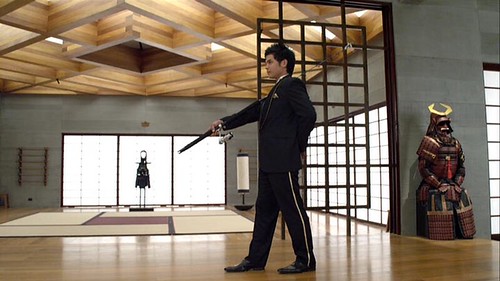




















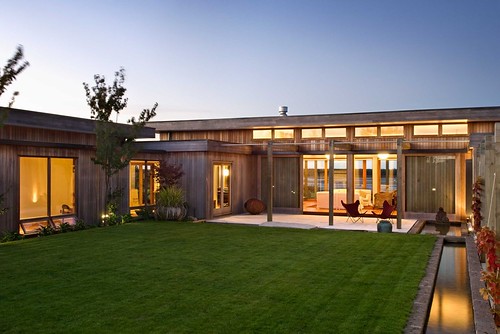


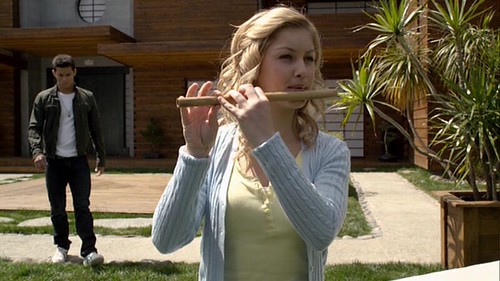





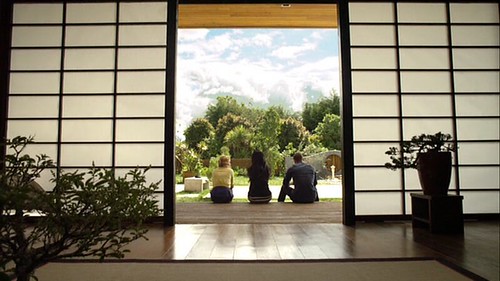
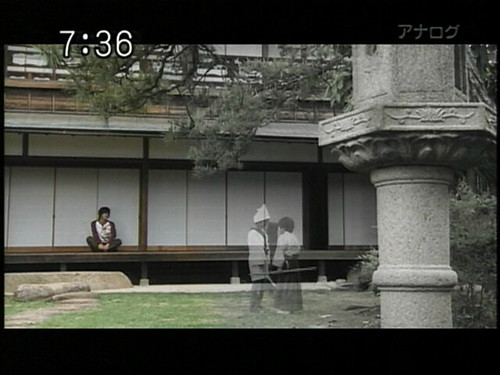

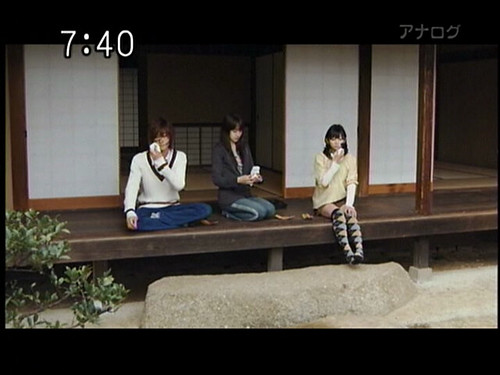




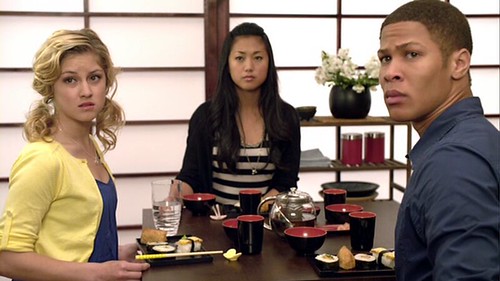


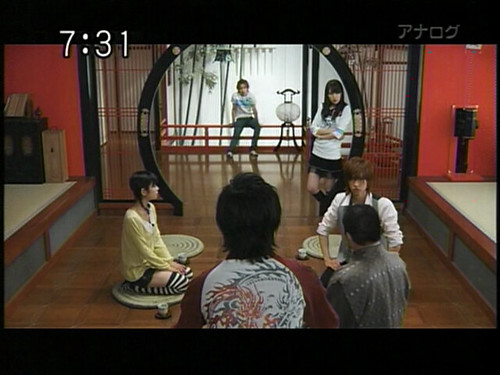





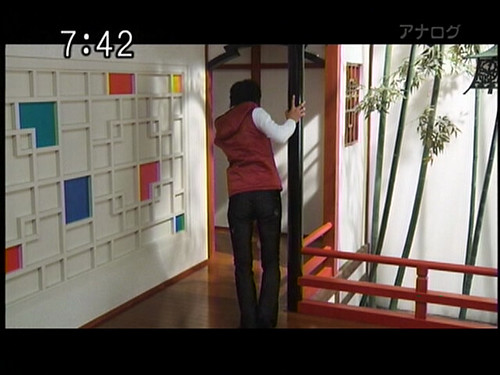

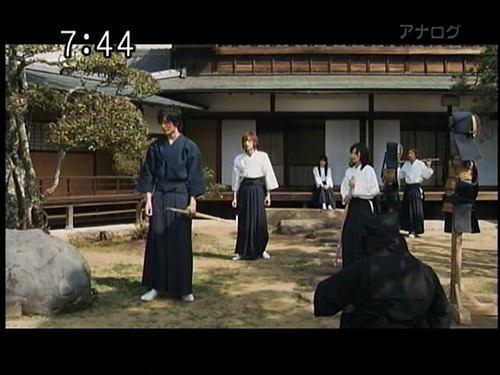
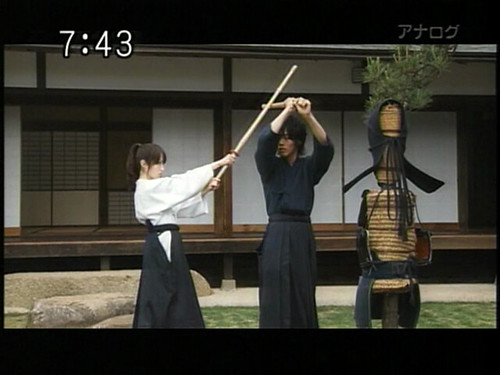












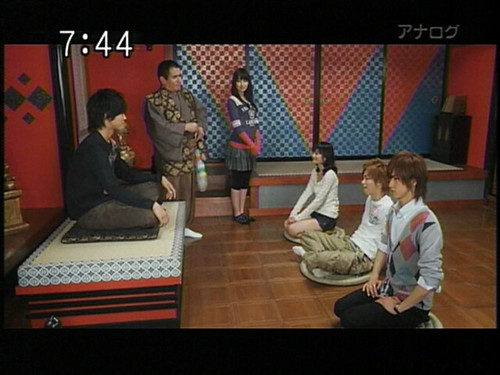





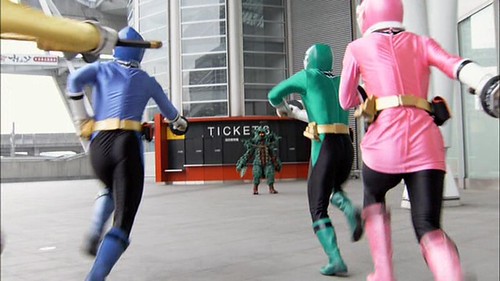

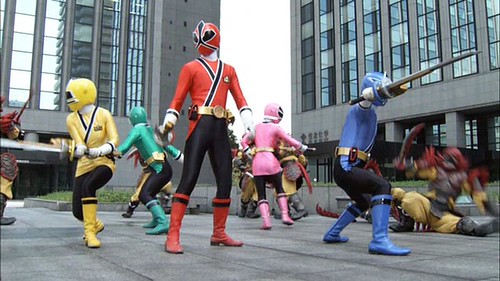

If you look at your picture of Kevins room there is a desk in the right hand corner with a lamp on it.